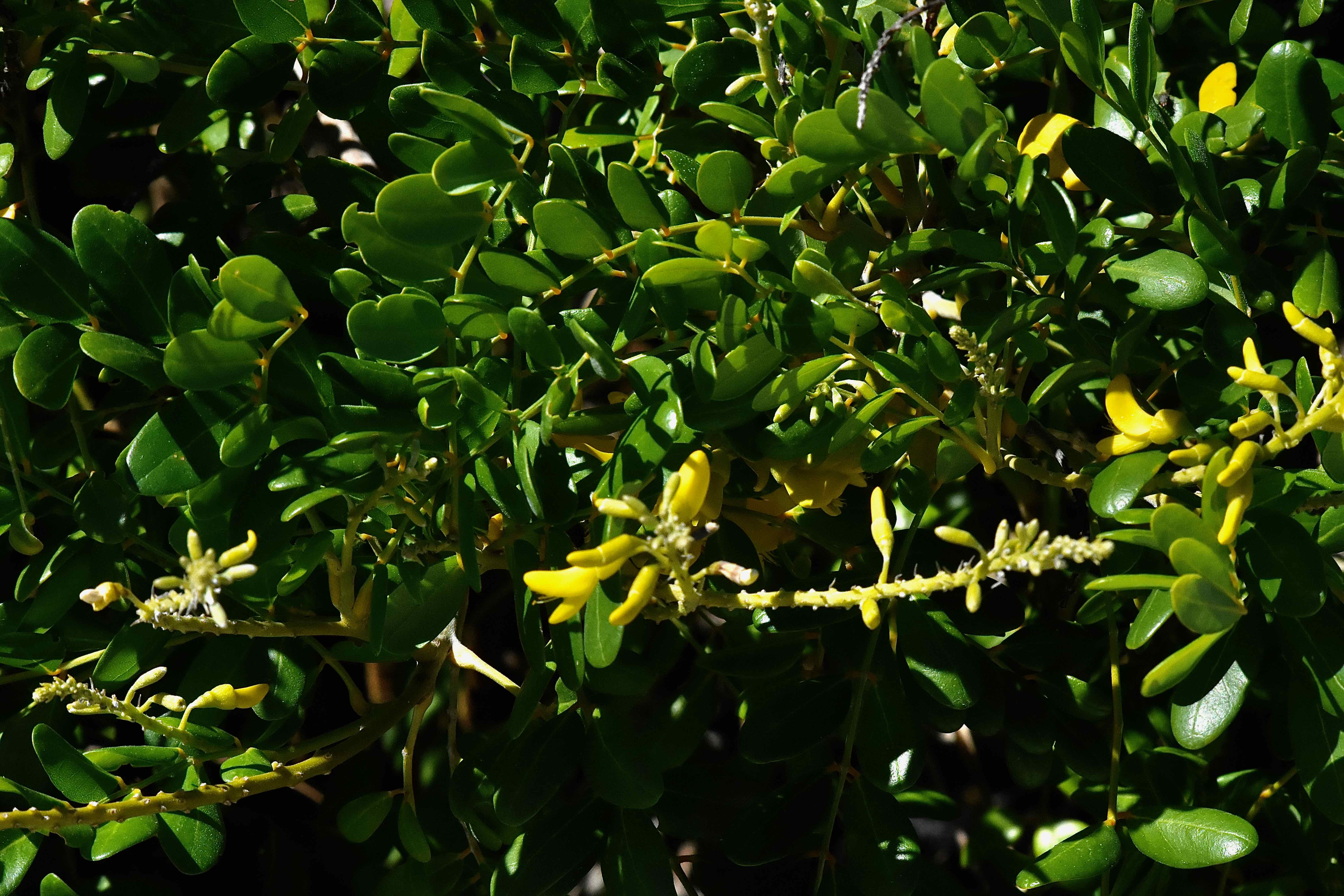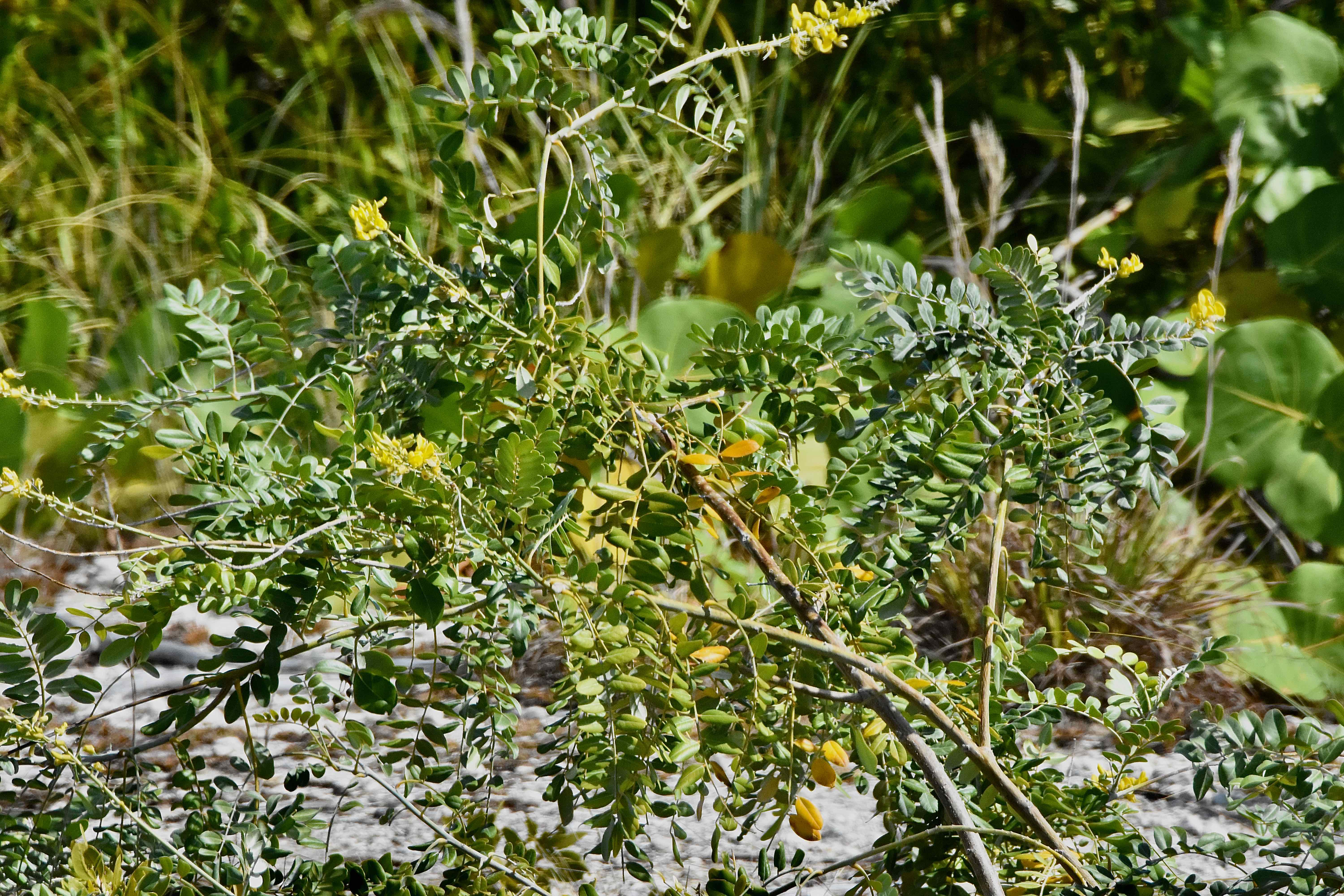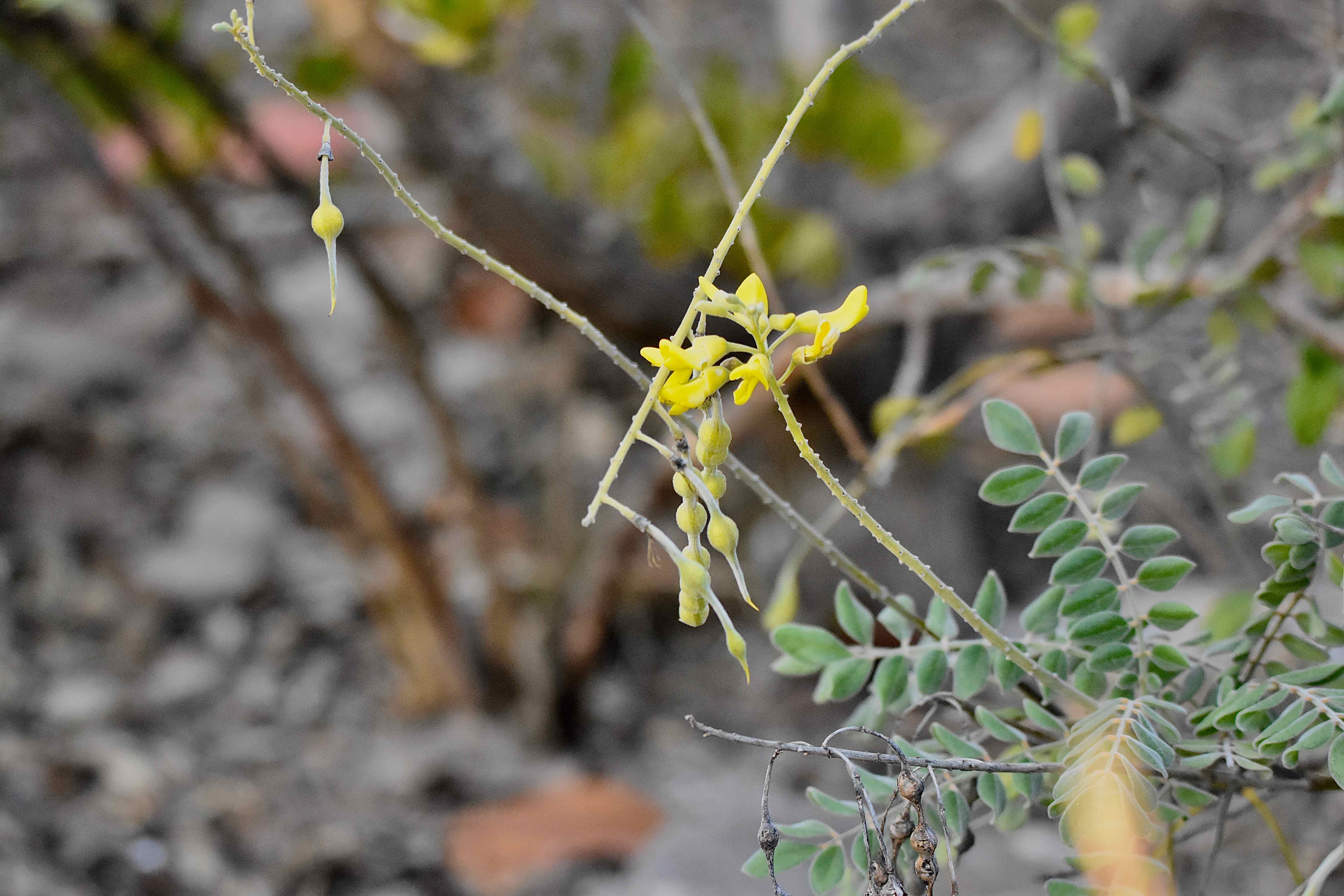
Yellow necklacepod, photographed at Lighthouse Beach Park, Sanibel, Lee County, in October 2016.
This is the story of two plants, one species. One native, the other not. Both identical in most ways. We're talking about necklacepod, Sophora tomentosa.
The native is yellow necklacepod, S. tomentosa var. truncata; the nonnative is hairy necklace pod, S. Tomentosa var. occidentalis. The difference? Hairy lives up to its name. It has hairs so thick and matted that they give the plant a silver look that the local variety lacks. Otherwise, the flowers, the leaves, the forms of the two plants pretty much identical.
Both varieties are available commercially, but according to the University of Florida, most of what's sold on the market is the non-native hairy variety. (A planting guide on the Key West Tropical Forest and Botanical Gardens website warns that some nurseries are falsely selling hairy necklacepod as the native yellow necklacepod.)
So what's the significance of differentiating the two? There is the genetic diversity that yellow necklacepod presents. It is our native, after all, and is considered rare here. And hairy necklacepod could threaten yellow neckplacepod in two ways. One, by becoming naturalized and taking away vital habitat, and two, by hybridizing. Biscayne National Park, in fact, lists hairy necklacepod as an invasive species, but other sources, including the authoritative Florida Exotic Pest Plant Council, do not.
In any case, necklacepod and its bright, yellow flowers are magnets for a variety of nectar-loving creatures. Bees, butterflies and hummingbirds are drawn to the blooms. Other animals find shelter in its dense foliage.
Necklacepod is a member of the pea family. It is a multi-stemmed shrub that can grow to about 10 feet tall with a spread just as wide. It has compound leaves that are alternate each other along the stem. The leaflets, however, line up opposite each other. The leaves are roughly oval-shaped, a shiny green above, duller green underneath. The plant produces spikes of flowers, technically called racemes, from the ends of branches. The flowers appear all year, but are heaviest in the fall. It is the shape of the fruit that inspires the name. Those brilliant yellow flowers give way to seed pods that grow as long as eight inches. The pods start out thin, almost string-like. As they mature, the skin constricts, prominently outlining the seeds they hold and eventually producing a necklace-like look as seen in the photo at the bottom right.
Necklacepod is a coastal plant, found in Florida as far north as Brevard and Levy counties. It grows on the edges of coastal forests and on the inland side of beach dunes. It is hardy to about 20 degrees. We've seen it grown inland but as a landscaping plant or in butterfly gardens.
Yellow necklacepod, the Florida native, is also a native of Mexico, Central America and South America. Hairy necklacepod is a native of Texas, Mexico and Central America. A third variety, Litoralis, is found in the Caribbean, including Puerto Rico. In one form or another, necklacepod is found in warm weather coastal areas pretty much worldwide.
Regardless of the variety, necklacepod plants are virtually chemical factories, producing alkaloids, flavonoids, pterocarpans and others. Research has shown the plant to have antifungal, antitumor and antimicrobial potential. In traditional medicine, it's been used to treat cholera, liver disease and as an antidote for eating poisonous fish. On the other hand, many of those same chemicals are toxic. It's used in landscaping as an accent plant or as a buffer. It's widely praised for its hardiness.
Hairy necklacepod is also known as Texas necklacepod. Other common names for the species include tambolisa, yellow sophora, silver bush and necklacepod. It's also spelled necklace pod. It is a member of Fabaceae, the pea family.
Click on photo for larger image
U.S. Department of Agriculture Distribution Maps
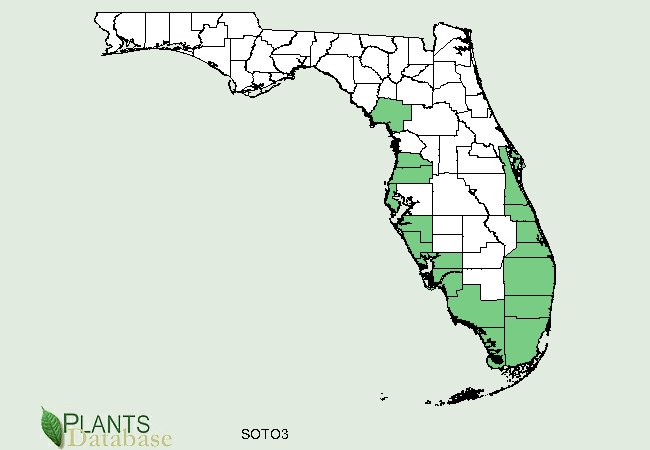

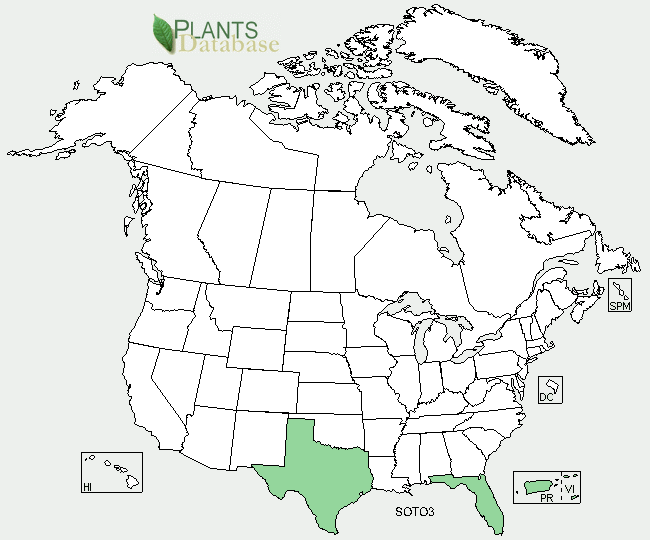
Links for Yellow Necklacepod

